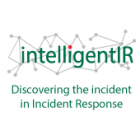
Curato
Although the internet provides a wide breadth of information in an extremely easy manner, a common issue people face -- regardless of the type of information -- is an overabundance of information. Services like Yelp, TripAdvisor, and GoGoBot provide lots of information, but do not always provide an easy way to whittle restaurant/activity choices to help a user make a decision. Moreover, the results of a search may not always be relevant to that user’s personal interests, due to how general the results are. Curato attempts to provide a single, convenient application to help users find businesses and points of interest relevant to their interests by taking advantage of simple machine learning algorithms.










